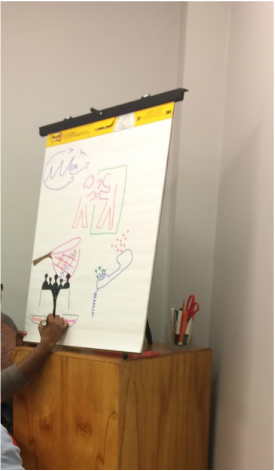Leadership and technology. What's happening in the age of technology?
Imagine the leader who hides behind technology to manage. Or, perhaps uses technology as a weapon, leverage even.
In thinking about the fast-paced technology-delivered methods of communication most people use to interact in the workplace, I began to wonder if technology affected the kind of leadership expected of followers? Does technology enhance transactional leadership, by aiding transactions between leader and follower? Can technology be used to serve followers? Might technology enhance the charismatic leader? Surely, technology is transformational, so can technology benefit transformational leadership? Of course, business setting and context matters ; however, it bears discussion among those who lead people and manage processes. HR and others in management positions should have conversations and assess the role of technology in leader-follower relationships. For example, how can virtual communication help leader-follower interaction? Do web meetings promote active listening and engaging conversation? Answering these and other questions is vital for organizational success in the age of technology. While technology is an excellent tool, it should not impede meaningful communication, professional business relationship building, or a leader’s ability to lead effectively.
|
|
|

Leaders and Followers: Working together for systems change
Leadership has been defined many ways. One definition is the ability of an individual to influence, motivate, and enable others to contribute toward the effectiveness and success of an organization or group. Northouse (2010) defines leadership as “a process whereby an individual influences a group of individuals to achieve a common goal”. When systems change is needed, leadership needs the "weight of followers" begin and ultimately sustain change. Lasting systems change requires competent and visionary along with motivated and committed followership.
Leadership has been defined many ways. One definition is the ability of an individual to influence, motivate, and enable others to contribute toward the effectiveness and success of an organization or group. Northouse (2010) defines leadership as “a process whereby an individual influences a group of individuals to achieve a common goal”. When systems change is needed, leadership needs the "weight of followers" begin and ultimately sustain change. Lasting systems change requires competent and visionary along with motivated and committed followership.

Literate people infer meaning, communicate with others, and capture ideas in many different ways. Visual literacy is the unique structure and practice of conveying and enhancing information through primarily pictorial representations, according to Donis A. Dondis, author of A Primer of Visual Literacy.
With info-graphics, participants utilize visuals to develop personal meaning, gain deeper analysis, and realize new approaches to framing ideas. Through pictures, graphs, charts, and tables, the creator exhibits evidence for analysis, and the dialogic analysis process can lead to deeper thinking, richer engagement and creative solutions. That’s the goal, right?